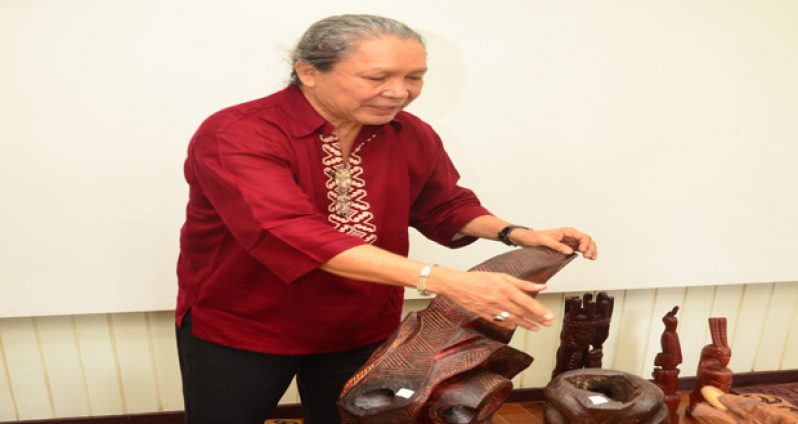INTERNATIONALLY acclaimed Lokono Arawak artist, George Simon has explained that Arawak traditions are based on large settlements, with economies based on manioc cultivation and fishing, and circular villages with plazas, ranked social systems, and hereditary chiefs.During an exclusive interview with the Guyana Chronicle, Simon explained that recent research has begun to attend to the historical population and the special patterning of settlements and landscapes. He noted that particular work has focused on the Arawakan linguistic and cultural family and the cause and consequences of its dispersion over lowland South America.
Simon is the recipient of the Golden Arrow of Achievement for exceptional contribution to social and community work among the Amerindian peoples of Guyana and the Golden Arrow of Achievement for exceptional contribution to arts and culture in Guyana. He is also the winner of the 2006 Banks Brew Masters Painting Award, the Guyana National Award for Painting 2012; and the Anthony N Sagba Caribbean Award for Excellence in 2012.
The Arawaks (Lokono), who were pioneer horticulturists, settled at Hosororo Creek on the Aruka River around 3,500 years ago. They also occupied the Corentyne River around 2,000 years ago, and also left their unique type of rock engraving at Timehri.
He went on to explain that because of the rich supply of protein found along the coastal swamps, they moved hundreds of tons of earth with wooden shovels to build habitation mounds and raised fields for farming, while on the hilltops they planted manioc, which they baked into bread on ceramic griddles.
The Arawaks hunted a lot during the rainy season when animals migrated from the lowlands in search of high ground. Among the game commonly hunted were deer, labba, tapir, peccary or wild hog, agouti, birds, turtles and parrots.
He noted that in contrast to neighbouring groups, as elsewhere in Amazonia, “Arawakans tend to exhibit large scale ceremonial gatherings, clan-based marriage, exchange systems, elaborate, far-flung trading activities and high degrees of formal social hierarchy.”
The Arawaks, through their interactions with the environment, have left their physical signatures, their footprints imbedded on the landscape by activities in which they engaged, he stated.
One of the key advances, Simon noted, has been a better appreciation of the connection between Awarakan language groups and particular archaeological features which, in both modern and past socio-cultural contexts, exhibit distinct material signatures in the landscape and associated artefact groupings.





.jpg)








